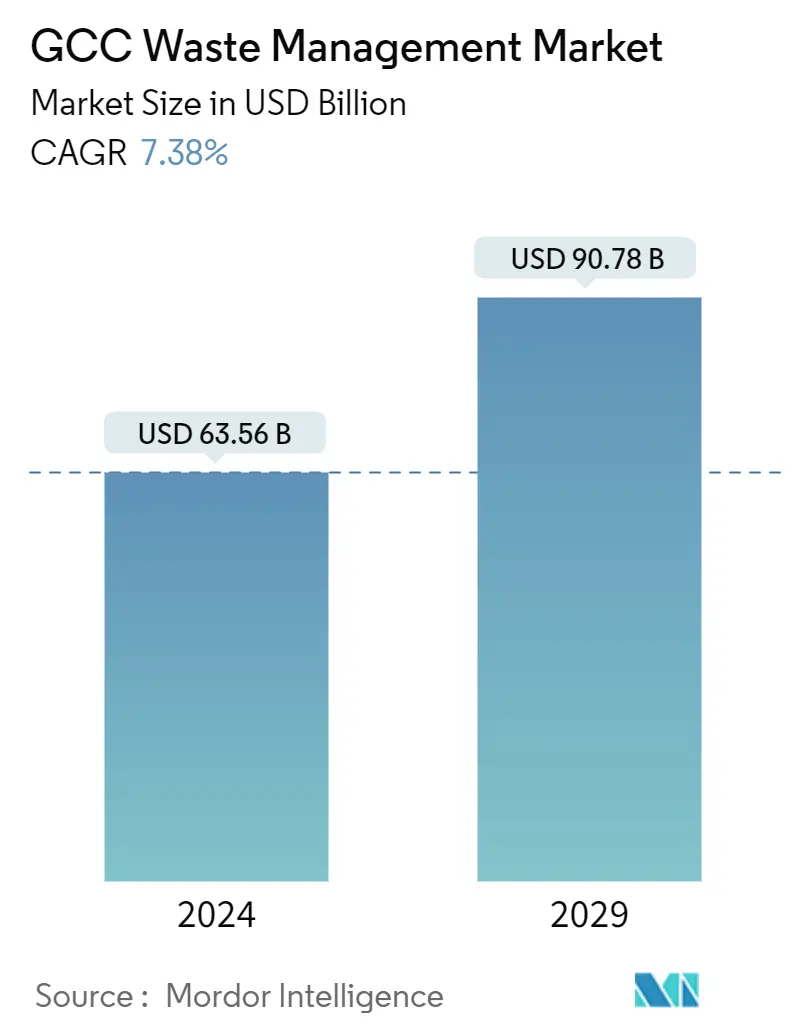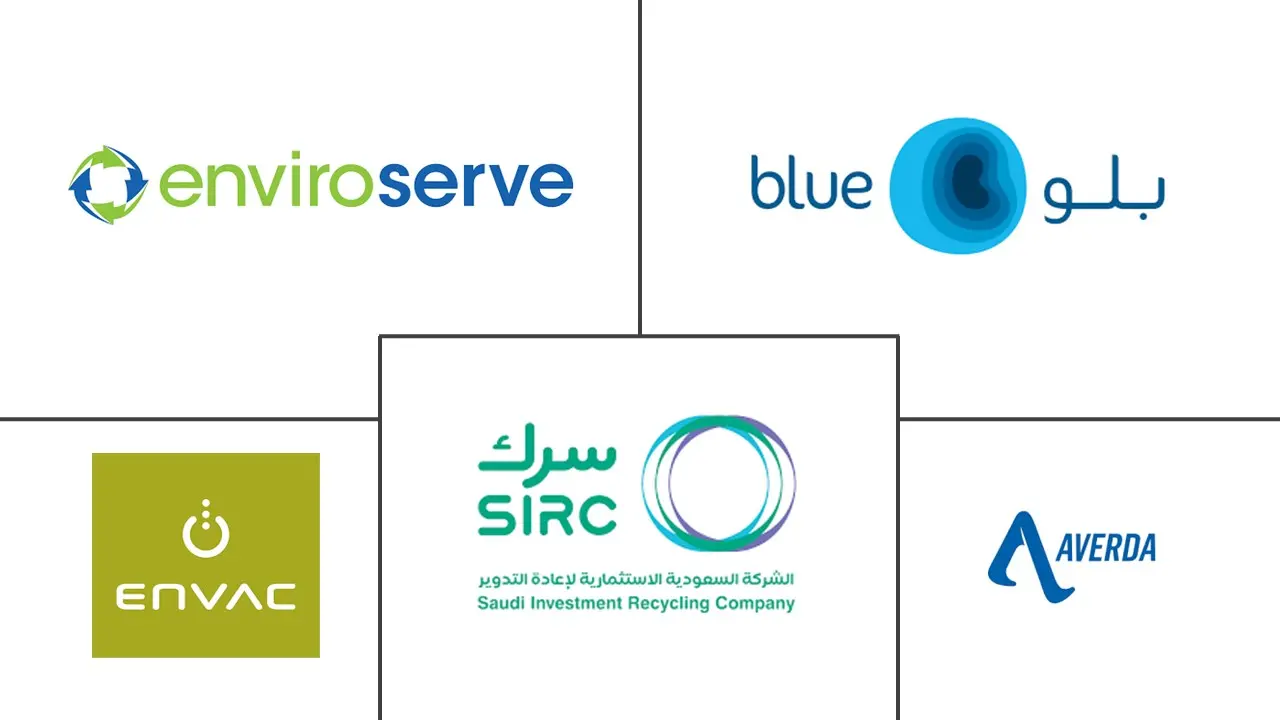Market Size of GCC Waste Management Industry

| Study Period | 2020-2029 |
| Base Year For Estimation | 2023 |
| Market Size (2024) | USD 63.56 Billion |
| Market Size (2029) | USD 90.78 Billion |
| CAGR (2024 - 2029) | 7.38 % |
| Market Concentration | Low |
Major Players
*Disclaimer: Major Players sorted in no particular order |
Need a report that reflects how COVID-19 has impacted this market and its growth?
GCC Waste Management Market Analysis
The GCC Waste Management Market size is estimated at USD 63.56 billion in 2024, and is expected to reach USD 90.78 billion by 2029, growing at a CAGR of 7.38% during the forecast period (2024-2029).
- The Gulf Cooperation Council region has witnessed rapid population and urbanization growth coupled with a substantial increase in the standards of living in the past decade. This led to increased waste generation and required effective practices to tackle the waste in an eco-friendly manner. Waste to Energy is the latest trend being followed in almost all of the Gulf Cooperation Council countries. Especially in the United Arab Emirates, specialized recycling centers and solid waste conversion plants have been set up in the past to address waste management issues.
- Currently, the GCC generates between 105 and 130 million tonnes of waste per annum, primarily from municipal solid waste, construction and demolition waste, and agricultural waste. Saudi Arabia and the UAE account for nearly 75 percent of all these wastes. By 2032, the Saudi government is aiming to generate about half of its energy requirements (about 72 GW) from renewable sources such as solar, nuclear, wind, geothermal, and waste-to-energy systems.
- Electronic waste (e-waste) management is currently a priority, especially in economically developing nations, because improper waste disposal leads to economic loss and negative impacts on the environment and public health. E-waste generation in this region is rapidly expanding because of improving standards of living, urban growth, access to technological improvements, changing customer preferences, and many other factors.
- The Kingdom of Saudi Arabia produces around 15 million tons of municipal solid waste (MSW) each year, with an average daily rate of 1.4 kg per person. With the current growing population (3.4% yearly rate), urbanization (1.5% yearly rate), and economic development, the generation rate of MSW will double (30 million tons per year) by 2033. The major ingredients of Saudi Arabian MSW are food waste (40-51 %), paper (12-28 %), cardboard (7 %), plastics (5-17 %), glass (3-5 %), wood (2-8 %), textile (2-6 %), metals (2-8 %), etc. depending on the population density and urban activities of that area. In Saudi Arabia, MSW is collected and sent to landfills or dumpsites after partial segregation and recycling. The major portion of collected waste ends up in landfills untreated. The landfill requirement is very high, about 28 million m3 per year.
- The Gulf Cooperation Council (GCC) countries will have to invest between USD 60 billion and USD 85 billion across four value streams plastic, concrete and cement, metal, and bio-waste - over the next two decades to achieve regional waste management targets, Boston Consulting Group (BCG) and World Business Council for Sustainable Development (WBCSD) said in a new report on October 2022. The investments will cover design, collection, sorting, and recycling investment across these four key waste streams.
